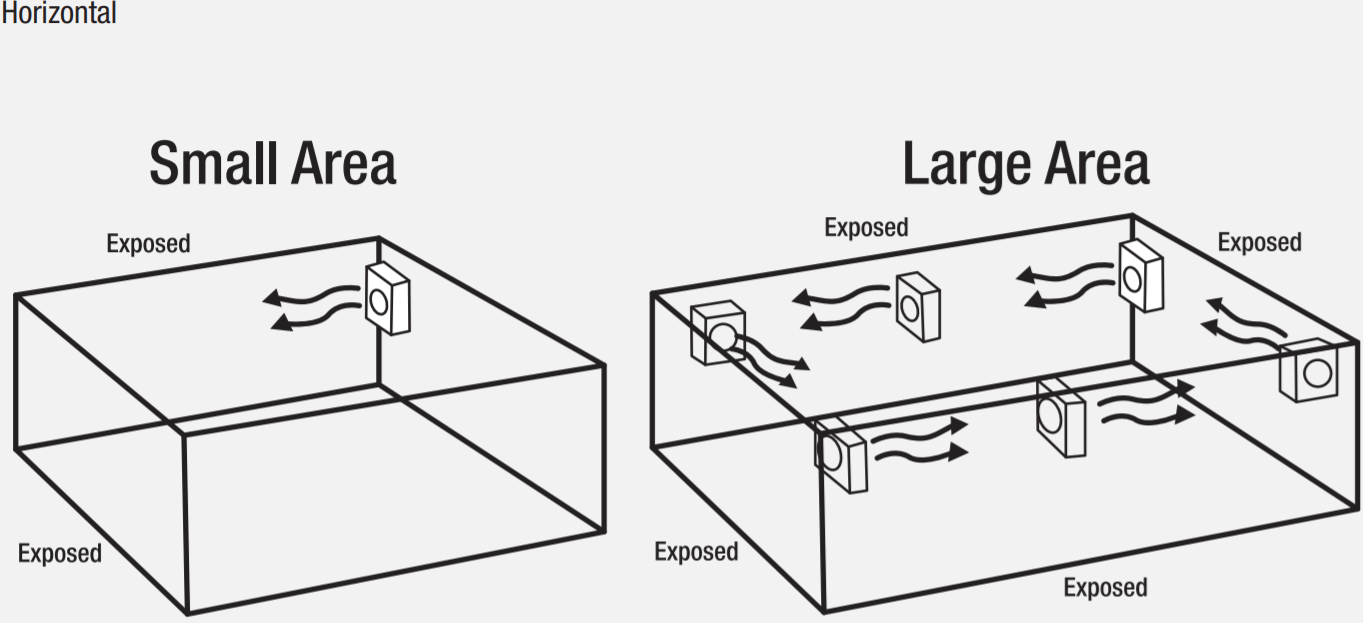Utility and shop heaters are intended to heat smaller spaces or be used as a temporary or spot heating. Typically you will use these in a smaller space for comfort heating or when you don’t want to heat up the whole garage but just yourself in a specific work area of a larger garage.
Your Structure
The key to comfort heating a space is to keep the heat you are making. Good insulation creates comfortable spaces and lower energy usage. Windows and door seal kits can reduce cold air entering or warm air leaving. Calking cracks and gaps in the building will help the heater do a better job keeping the heat inside the building.
Sizing
1500 watts for 200 sq. ft., 4000 watts for 500 sq. ft., 4800 for 600 sq. ft. This is with good insulation. Lower insulation will require you to have more than one heater in a space. For spot heating a person typically the 4800 watt heater will do the best job. For dry out applications of construction sites and paint the lower 4000 watt units with high airflow and lower heat work best.
Ceiling Height
The higher the ceiling the less effective a portable heater is. Hot air rises to the roof very quickly when an undersized heater is placed into a large space. This would be to heat a person only at a close range and not intended to heat the building. 8 to 10 ft. in height is the maximum for the 4000 to 4800 watt range of portables for comfort heating and 8 ft. for the 1500 watt units.
Horizontal Mount
Smaller rooms can be heated by one unit heater. Where two walls are exposed heaters should be mounted as shown below.In larger rooms, units should be located so air streams wipe exposed walls without blowing at them. Units should be located so the airstream of one supports that of another thus setting up a circulatory air movement. (Distance between units to be approximately 1 times published air throw).Units should not be mounted horizontally in areas having ceiling heights in excess of 10 to 12 feet.
Vertical Mount
Units should be mounted vertically in high bay areas where they may not otherwise interfere with assorted material or handling equipment. Heaters should be situated to provide free air circulation. Size and selection of units should be based on recommended mounting height. Unit heaters are frequently used to combat cold air inrush when loading dock doors are opened. For such applications, one or more units should be arranged to blow warm air vertically in front of opening.
Mounting Limitations
Unit heaters should not be used in potentially explosive atmospheres. The finish is not intended for direct salt spray exposure in marine applications or the highly corrosive atmospheres of swimming pools, chemical storage bins, etc. Please refer to the factory for explosion proof or marine application heater information.Do not install unit heaters above recommended maximum mounting height. See chart for height information. Obstructions must not block unit heater air inlet or discharge. To prevent possible injury heaters must be mounted at least 6 feet above the floor to prevent accidental contact with heating element or fan blade.
